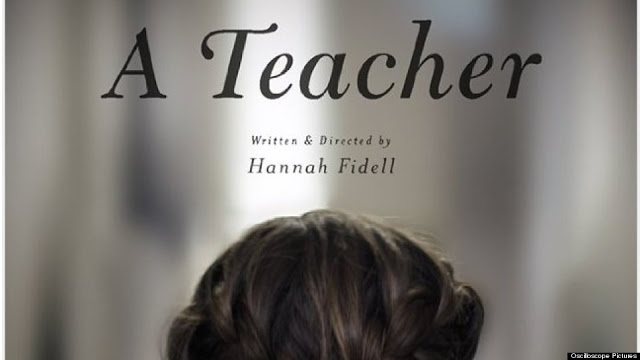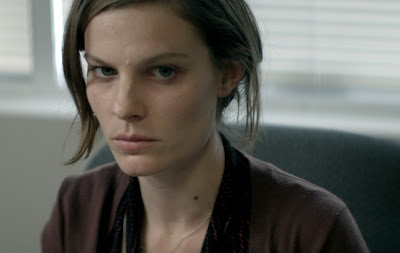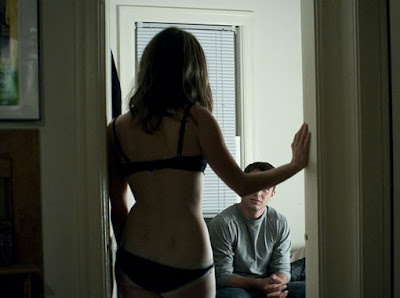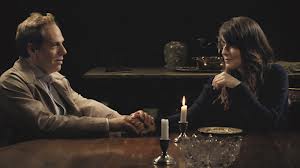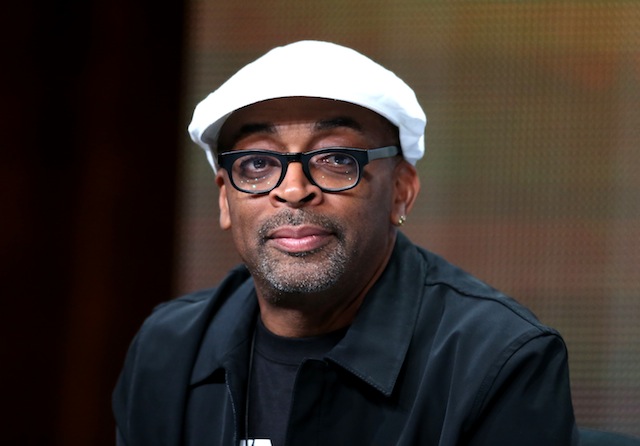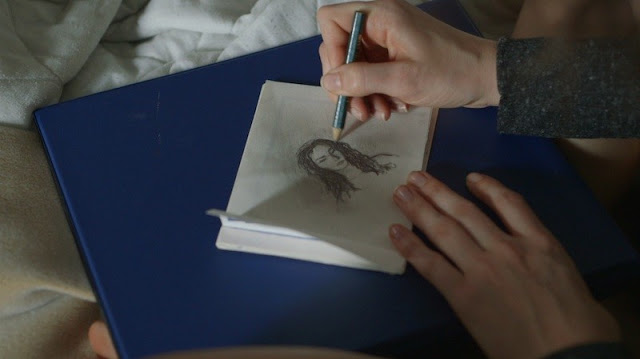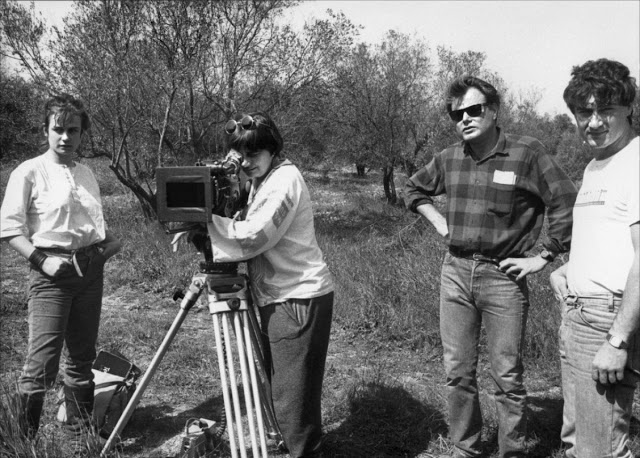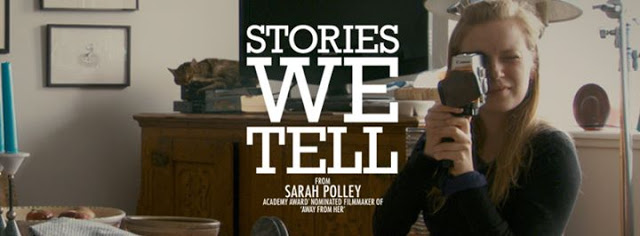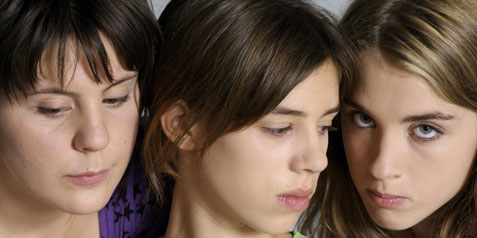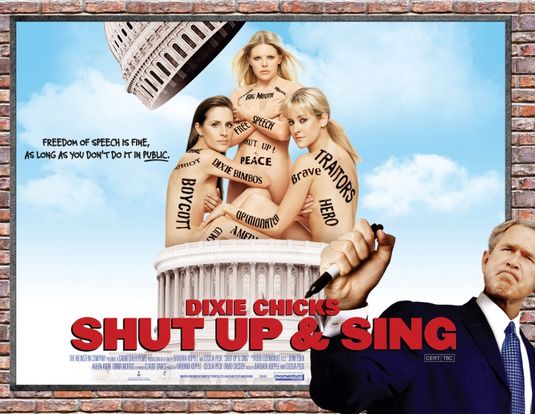 |
| Movie poster for In a World … |
1) Number one and most important of all, I’m thankful this movie was written and directed by a woman and that it’s a story about a strong, smart, interesting woman.
 |
| Director and screenwriter Lake Bell at the Sundance Film Festival |
I am incredibly thankful about that.
2) I’m thankful this movie stars an actress who doesn’t look like every other Hollywood actress. Yes, Bell is beautiful, but she also doesn’t have the button nose, full lips, perfect posture, and blond hair that has become so annoyingly ubiquitous among our female movie stars.
 |
| Louis (Demetri Martin) and Carol Solomon (Lake Bell) sing their guts out in In a World … |
And neither do her co-stars…
 |
| Louis (Demetri Martin) and Cher (Tig Notaro) watch Carol Solomon (Lake Bell) record a voice-over. |
(You also gotta love a movie that has both Tig Notaro and Geena Davis.)
3) On a related note, I’m thankful Bell’s protagonist, Carol Solomon, doesn’t always act like a leading lady—she shuffles, lurches, and acts generally spazzy. She doesn’t always look glamorous either—she doesn’t always wear makeup or look perfectly primped and often wears regular-people clothes (sweatpants, thermal underwear, t-shirts, football jerseys, overalls, ill-fitting dresses, etc.)—just like the rest of us.
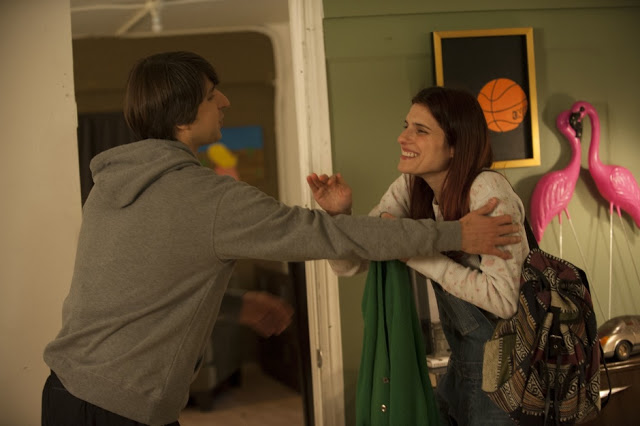 |
| Louis (Demetri Martin) and Carol Solomon (Lake Bell) hatch plans to take over the voice-over industry. |
At the same time, I’m glad Carol looks attractive when she wants to without looking trashy or showing off all the goods.
4) I’m also thankful that several men are attracted to Carol even though she doesn’t know how to dress or stand up straight (and that the men who are drawn to her are attractive but not perfect either).
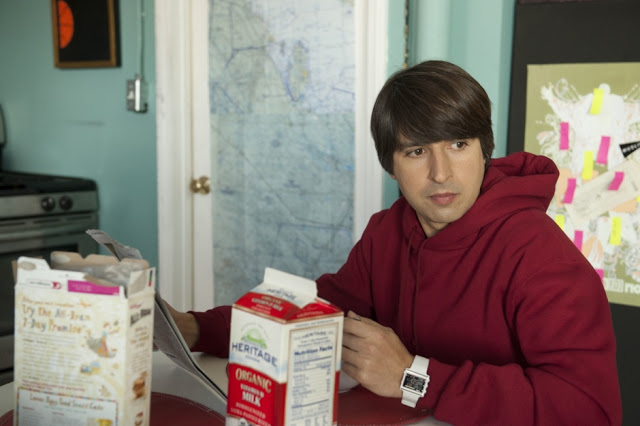 |
| Carol Solomon’s love interest, Louis (Demetri Martin) |
5) I love, too, that this film shows an intelligent, driven, attractive young female protagonist in a relationship, but it isn’t what defines her. Let me say that again: Thank God her relationship doesn’t define her!
I was equally thrilled that Carol had casual sex with some random guy she met at a party and celebrated it. And that she didn’t end up regretting her actions or have something bad happen to her as a result. In this movie, sex was just part of life—no big deal—much like it is in real life.
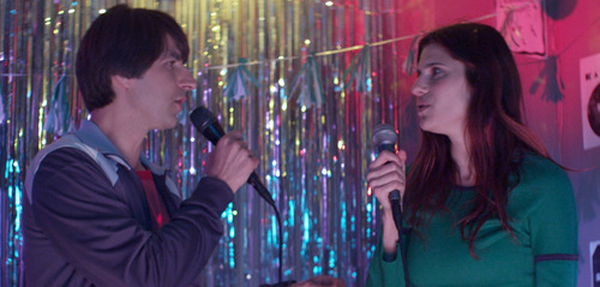 |
| Louis (Demetri Martin) and Carol Solomon (Lake Bell) karaoke the night away in In a World … |
6) I was also head over heels over the fact that the two sisters—Carol and Dani—were so close and leaned on each other for everything.
 |
| Carol Solomon (Lake Bell) and her sister, Dani (Michaela Watkins) |
I was glad, as well, that the person who had an “affair” in this movie was a woman (rather than a man) and that she didn’t actually go all the way.
7) I really appreciate, too, that this movie shows a young person living at home with a parent and that she isn’t doing so because she’s a lazy, lost, unmotivated slacker.
 |
| Carol Solomon (Lake Bell) and her father (Fred Melamed) argue about her career. |
And I was truly blown away by the film’s characterization of Carol’s family—a real family having down-to-earth, regular problems.
No, nobody is dying of cancer, nobody is mentally ill or disabled, nobody is in prison, nobody is an alcoholic. The characters in this movie are just average people with average problems—like jealousy, resentment, miscommunication, and selfishness.
I am very grateful about that.
 |
| Carol Solomon (Lake Bell) and her father (Fred Melamed) on the way to an industry party. |
8) I’m thrilled about several things relating to Carol’s job…
I’m relieved Carol works in a non-glamorous industry that we don’t usually see featured in movies—the voice-over industry.
 |
| Carol Solomon (Lake Bell) records a voice-over. |
I love, too, that she cares so much about her work even though it doesn’t pay the bills.
And I’m glad that the film shows her having some success in that field without totally dominating it a la every other movie ever made (Erin Brockovich, Jerry Maguire, The Devil Wears Prada, Working Girl, etc., etc.).
9) I’m downright ecstatic about the fact that Carol didn’t have to trip or fall to make us laugh, avoiding the ridiculous formulas that often dominate movies about women.
 |
| Carol Solomon (Lake Bell) surrounded by her work notes in her bedroom at her father’s house. |
Thank you for that, Lake Bell!
Tangentially, it was also awesome that Carol was irritated by stupid people doing stupid things and didn’t apologize for that.
10) And last but not least, I’m incredibly thankful this movie made me laugh and feel and, for God’s sake, think.


